<< Our Photo Pages >> Chaco Culture NHP - Ancient Village or Settlement in United States in The Southwest
Submitted by bat400 on Friday, 11 December 2015 Page Views: 25509
Multi-periodSite Name: Chaco Culture NHP Alternative Name: Chaco CanyonCountry: United States Region: The Southwest Type: Ancient Village or Settlement
Nearest Town: Farmington Nearest Village: Nageezi
Latitude: 36.045100N Longitude: 107.872W
Condition:
| 5 | Perfect |
| 4 | Almost Perfect |
| 3 | Reasonable but with some damage |
| 2 | Ruined but still recognisable as an ancient site |
| 1 | Pretty much destroyed, possibly visible as crop marks |
| 0 | No data. |
| -1 | Completely destroyed |
| 5 | Superb |
| 4 | Good |
| 3 | Ordinary |
| 2 | Not Good |
| 1 | Awful |
| 0 | No data. |
| 5 | Can be driven to, probably with disabled access |
| 4 | Short walk on a footpath |
| 3 | Requiring a bit more of a walk |
| 2 | A long walk |
| 1 | In the middle of nowhere, a nightmare to find |
| 0 | No data. |
| 5 | co-ordinates taken by GPS or official recorded co-ordinates |
| 4 | co-ordinates scaled from a detailed map |
| 3 | co-ordinates scaled from a bad map |
| 2 | co-ordinates of the nearest village |
| 1 | co-ordinates of the nearest town |
| 0 | no data |
Internal Links:
External Links:
I have visited· I would like to visit
jeffrep visited on 1st Oct 2015 - their rating: Cond: 3 Amb: 5 Access: 4
mfrincu visited on 28th Nov 2014 - their rating: Cond: 4 Amb: 5 Access: 4 Superb ambience and lots of kivas to see and explore. We've done the loop plus the trail to the supernova pictograph in just one day.
rrmoser visited on 18th Jul 2014 - their rating: Cond: 5 Amb: 5 Access: 5
bat400 visited on 25th Apr 2012 - their rating: Cond: 3 Amb: 5 Access: 4 The park is must see for anyone visiting northwest New Mexico. However, the park is in a remote area, with minimal services. (In my opinion, this is part of the experiance.)
Be sure to review the park website to properly prepare for your trip. Camping at the park and extending your visit for several days would have many rewards, but all the major sites along the paved driving loop can be visited in one long day. If you are at all fit, take one of the "back country" trails to visit one or more sites on the mesa tops surrounding the canyon and "Downtown Chaco".
Park ranger tours are available at the main sites several times a day during high season, see the website for the National Park. Inexpensive guide books are often available as you enter specific sites, or from the Visitor's Center. Wheel chair access is possible for portions of the walking trail at Pueblo Bonito, but even there the path is sand or gravel, not paved. Large chair tires or an assistant would be necessary.
Note: A sturdy passenger vehicle is adequate to cross aproximately 13 miles of unpaved, washboard roads to reach the park itself. No not use a vehicle with "low profile" tires, and call for road conditions during the winter or following any periods of rain. Locals take the dirt road at speeds that you would not think possible, and actually reaching speeds of 45-55 mph will reduce the severe impacts as your car's shock absorbers dampen out the input frequency of the roadbed. (Try this, but remember that you MUST slow on curves, when coming on rises, or whenever visiblity is degraded. Otherwise you will slide off the road or strike other vehicles or livestock.)
Average ratings for this site from all visit loggers: Condition: 3.75 Ambience: 5 Access: 4.25

The Chaco culture of the Ancestral Puebloans (Hisatsinom, previously identified as 'Anasazi') included a variety of architecture, a complex community life, and a trading network that stretched into Mexico and the great Mesoamerican cultures. The great expansion of Chaco seems to have been cut short after a regional, fifty year drought hit in the twelfth century. In successive years the Chaco culture and lifestyle appears to have broken and dispersed, although studies of the effect of drought on crop yields in the area indicate that other reasons besides basic survival may have led to a total abandonment of the villages in the canyon itself. The modern Pueblo Indians claim the Ancestral Puebloans as their ancestors and specific features of culture bear out a multitude of connections.
Earlier years of excavation led to immediate postulation of a high population count of "apartment" dwellers, but over the years analysis of the finds and consideration of the ability of the surroundings to supply wild and cultivated foods and fuel has changed that original view. The Great House complexes are now seen as centers of trade and/or worship that had relatively small year round populations. The Chaco Culture may have been revolved around an elite who controlled the collection and distribution for stored food or luxury goods.
The park contains a visitor's center with museum, and a multitude of archaeological sites, many of which may be driven to, and many others that are accessible by hiking trails. The highlights of the park are five large pueblo sites, covering acres of land. Some are completely excavated. Others have been left unexcavated, or have been examined and partially reburied.
Although classic Pueblo structures predate the Chaco Culture phenomena, Chaco sites are known for "Great House" structures where this architecture was carried out on a massive scale, creating large plazas and individual rooms, and ranks of multiple stories of rooms. The buildings are of the canyon's natural sandstone, laid with little or no mortar, and the room structures created by the use of large primary timbers overlaid with smaller timber beams to create a wooden sub-floor that was then covered with clay and sand. All larger timbers were brought into the canyon from forests 40-50 miles away, without beasts of burden. The massive walls of the Great Houses were created with a core and veneer method and are up to three feet thick and were plastered inside and out. The most massive of the Great Houses, Pueblo Bonito, has been said to rival the Roman Colosseum, although it was built without the use of metal tools.
Early archaeologists and the National Park Service has stabilized the structures to prevent or reduce further damage. In general, if structures were intact after excavation the Park Service has attempted to stabilize them in that condition, which has sometime required re-building.
Petrogylphs and solar calendar sites are here, as well as traces of a road system connecting Chaco to other settlements.
The extremely dry weather of the canyon itself, with poor growing conditions, little game, and minimal firewood was one of the primary reasons to dispute an original concept of large, permanent populations within the Great Houses. Other indications include relatively small numbers of burials for the time periods of construction, and large numbers of the Great House rooms without hearths or the debris of daily living.
See individual Megalithic Portal site pages for individual structures and features within the park.
Location is given for the east access point to the park, the current recommended entrance for best road conditions (2012.) Please review the park's website before visiting. Services within the park and within 60 miles are limited; Nageezi, 25 miles (13 miles on unpaved, wash-panned surface) from the north entrance has no lodging, but does have gasoline, food, and some supplies. The large village of Cuba, NM, and the town of Farmington, NM offer lodging, banking, and many other services. Once you are in the park most Great House sites are reached by short footpaths from a paved driving loop. Other sites require hikes of variable length and difficulty. Weather conditions may be severe. Camping is available at the park year round, but temperatures range from 10 deg F to 98 deg F - for the most part there is no shade. Sudden rain storms can wash out roads and result in sudden temperature drops. The entire area is above 6000 feet and some visitors will feel the effects of the altitude while hiking.
[Information from National Park Service website, including the brochure, " Chaco Culture National Historical Park" by Ron Lusser,
People of Chaco by Kendrick Frazier,
The Chaco Research Archive, and
the Nageezi Chapter House website, among other sources.] Chaco Canyon is an Unesco World Heritage Site.
National Park Website.
Note: Dendroprovenance shows switch in wood source corresponds with flourishing of Chacoan culture, see the latest comment for more
You may be viewing yesterday's version of this page. To see the most up to date information please register for a free account.

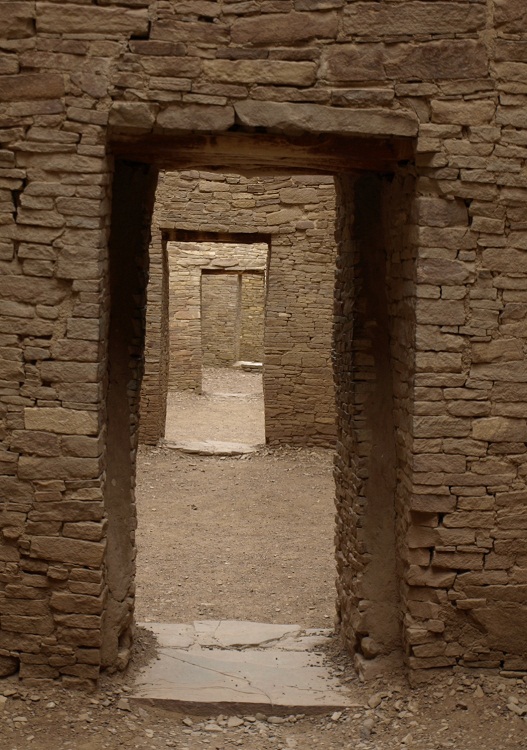
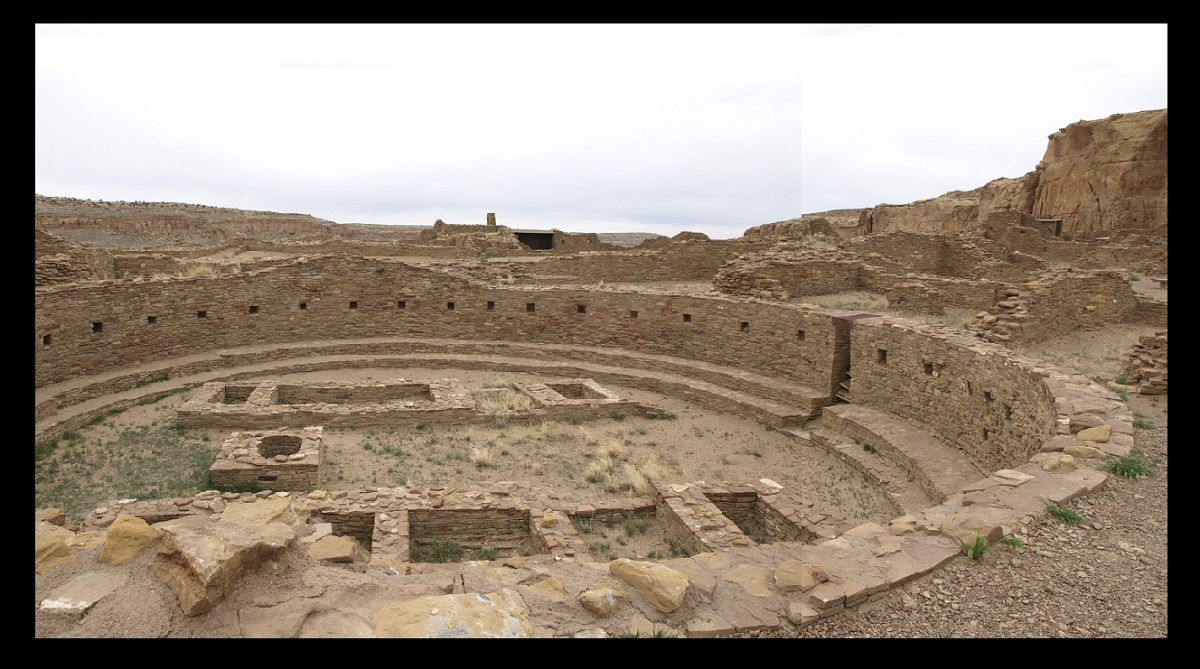
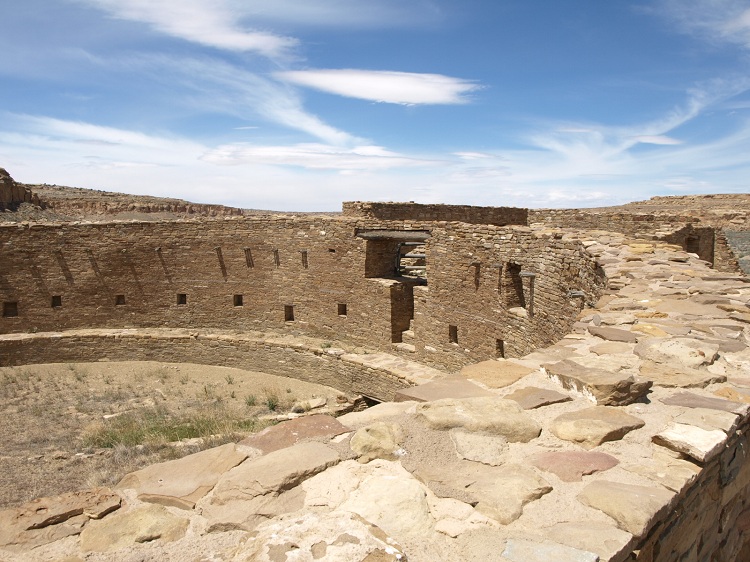
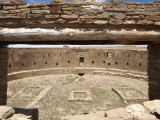
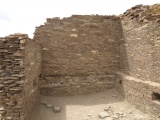
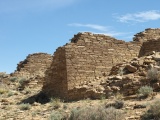
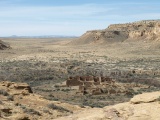
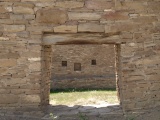
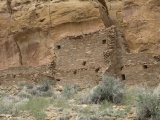
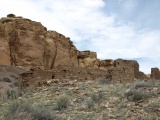
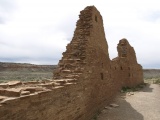
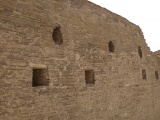




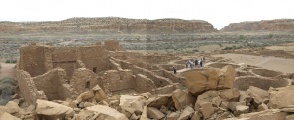
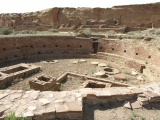
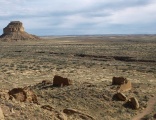


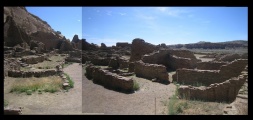
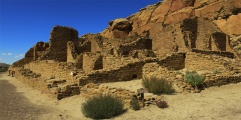
These are just the first 25 photos of Chaco Culture NHP. If you log in with a free user account you will be able to see our entire collection.
Do not use the above information on other web sites or publications without permission of the contributor.
Click here to see more info for this site
Nearby sites
Click here to view sites on an interactive map of the areaKey: Red: member's photo, Blue: 3rd party photo, Yellow: other image, Green: no photo - please go there and take one, Grey: site destroyed
Download sites to:
KML (Google Earth)
GPX (GPS waypoints)
CSV (Garmin/Navman)
CSV (Excel)
To unlock full downloads you need to sign up as a Contributory Member. Otherwise downloads are limited to 50 sites.
Turn off the page maps and other distractions
Nearby sites listing. In the following links * = Image available
2.1km S 174° Chaco Culture NHP - Wijiji Ancient Village or Settlement
3.7km WSW 252° Chaco Culture NHP - Una Vida Petroglyph site* Rock Art
3.8km WSW 251° Chaco Culture NHP - Una Vida* Ancient Village or Settlement
4.5km SW 230° Chaco Culture NHP- Fajada Butte* Rock Art
5.2km W 276° Chaco Culture NHP - Hungo Pavi* Ancient Village or Settlement
7.6km WNW 283° Chaco Culture NHP - Chetro Ketl* Ancient Village or Settlement
7.8km W 263° Chaco Culture NHP - Tsin Kletzin* Ancient Village or Settlement
8.0km W 278° Chaco Culture NHP - Casa Rinconada* Ancient Temple
8.2km WNW 290° Chaco Culture NHP - Pueblo Alto* Ancient Village or Settlement
8.2km WNW 282° Chaco Culture NHP - Pueblo Bonito* Ancient Village or Settlement
8.4km WNW 289° Chaco Culture NHP - New Alto* Ancient Village or Settlement
8.6km WNW 282° Chaco Culture NHP - Pueblo del Arroyo* Ancient Village or Settlement
9.1km WNW 284° Chaco Culture NHP - Kin Kletso* Ancient Village or Settlement
11.1km WNW 288° Chaco Culture NHP - Penasco Blanco Trail Petroglyphs* Rock Art
12.3km WNW 290° Chaco Culture NHP - Supernova pictograph* Rock Art
12.5km WNW 289° Chaco Culture NHP - Peñasco Blanco* Ancient Village or Settlement
18.2km W 264° Chaco Culture NHP - Kin Klizhin* Ancient Village or Settlement
19.4km ESE 113° Pueblo Pintado* Ancient Village or Settlement
24.6km W 259° Kin Bineola* Ancient Village or Settlement
46.5km SSW 208° Kin Ya'a* Ancient Village or Settlement
68.4km S 191° Blue J Ancient Village or Settlement
70.8km SSW 193° Casamero* Ancient Village or Settlement
74.3km N 349° Salmon Ruins* Ancient Village or Settlement
88.5km N 353° Aztec Ruins National Monument* Ancient Village or Settlement
88.6km NNE 12° Simon Canyon Ruins* Ancient Village or Settlement
View more nearby sites and additional images



 We would like to know more about this location. Please feel free to add a brief description and any relevant information in your own language.
We would like to know more about this location. Please feel free to add a brief description and any relevant information in your own language. Wir möchten mehr über diese Stätte erfahren. Bitte zögern Sie nicht, eine kurze Beschreibung und relevante Informationen in Deutsch hinzuzufügen.
Wir möchten mehr über diese Stätte erfahren. Bitte zögern Sie nicht, eine kurze Beschreibung und relevante Informationen in Deutsch hinzuzufügen. Nous aimerions en savoir encore un peu sur les lieux. S'il vous plaît n'hesitez pas à ajouter une courte description et tous les renseignements pertinents dans votre propre langue.
Nous aimerions en savoir encore un peu sur les lieux. S'il vous plaît n'hesitez pas à ajouter une courte description et tous les renseignements pertinents dans votre propre langue. Quisieramos informarnos un poco más de las lugares. No dude en añadir una breve descripción y otros datos relevantes en su propio idioma.
Quisieramos informarnos un poco más de las lugares. No dude en añadir una breve descripción y otros datos relevantes en su propio idioma.